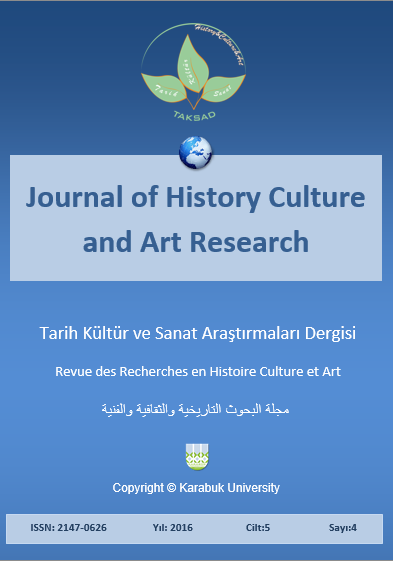Abstract Expressionism: A Case Study on Jackson Pollock's Works
DOI:
https://doi.org/10.7596/taksad.v5i4.606Keywords:
Abstract expressionism, modern art, surrealism, imagination, Jackson Pollock.Abstract
Abstract
The present study investigates the incident in abstract expressionism works especially the works were done by Jackson Pollock. For this purpose, a qualitative method (descriptive analytical) was used. Necessary data and information were collected by using the library and field research methods. The main purpose of this research is explanation of incident in abstract expressionism works, especially the Jackson Pollock's works. The major findings and results that were obtained show that Pollack's works are not accidentally and they are results of several years of works. Painter has been practiced to remove the topic form his works and after the action paintings are popular. He used his inner conscience in his works, and according to his own conclusion whenever he loses this connection with his inner conscience, his work would be destroyed. In the abstract expressionism works, the unconscious movement of hands and uncontrolled transferring of the paint can be seen on the canvas. In addition, his works are full of instinctive and emotional behavior. Actually, the action of painting would be priority in abstract expressionism works. It is a style, which is coming from his artist experience.
References
Ahmadi, Babak (2001). Truth and Aesthetics. Tehran: Publishing Center.
Alizad, Ali Akbar (2008). Approaches to the Theory of Implementation. Tehran: Publishing Center.
Arnason, H. H. (1996). History of Modern Art. Translated by M. Islamiyah. Tehran.
Koli, Michael (2004). Encyclopedia of Aesthetics. Translated by Mashiat Alaei. Tehran: The Center for Studies and Researches of Art.
Noori Kotenaee, Nezamoddin (2010). Schools, Styles and Movements: Literary and Artistic World by the End of the Twentieth Century. Tehran: Asadi Memorial Publications.
Oliver, Clare (2009). Jackson Pollock: Artists in Their Time. Translated by Hadi Taghavi. Tehran: Publisher of Tehran.
Pakbaz, Rooen (2002). In Search of a New Language. Tehran: Look Publications.
Pakbaz, Rooen (2007). Art Encyclopedia. Tehran: The Contemporary Culture.
Parmezani, Loredana (2010). Insurgents of Twentieth Century Art. Translated by M. Chehregan and S. Mir Abedi. Tehran: The Publishing View.
Paz, Octavio (1997). Art History. Translated by Nasser Fakouhi. Tehran: Birch Publications.
Reid, Herbert (2011). Art History World. Translated by Ali Farzadi. Tehran: Publication If.
Samiazar, Ar (2009). Peak and Decline of Modernism. Tehran: Publisher of Tehran.
Smagola, Havardjy (2002). Contemporary Trends in the Visual Arts. Translated by Farhad Ghabraee. Tehran: Art Publishing Research Bureau.
Smith, Edward Lucie (2001). Concepts and Approaches in the Latest Artistic Movements of the Twentieth Century. Translated by Alireza Samiazar. Tehran: Publish Comment.
Smith, Edward Lucie (2002). Culture and Artistic Expressions. Translated by Farhad Goshayesh. Tehran: Publication of Chastity.
Downloads
Published
How to Cite
Issue
Section
License
All papers licensed under Creative Commons 4.0 CC-BY.- Share — copy and redistribute the material in any medium or format
- Adapt — remix, transform, and build upon the material for any purpose, even commercially.
Under the following terms:
Attribution — You must give appropriate credit, provide a link to the license, and indicate if changes were made. You may do so in any reasonable manner, but not in any way that suggests the licensor endorses you or your use.
- No additional restrictions — You may not apply legal terms or technological measures that legally restrict others from doing anything the license permits.







